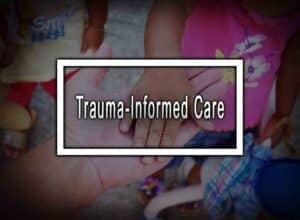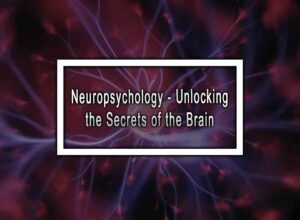Table of Contents
ToggleGet Your Voltage On – Unveiling the Mysteries of Electroconvulsive Therapy (ECT)
Electroconvulsive Therapy (ECT), commonly known as “shock therapy,” has been a topic of intrigue and controversy since its introduction in the 1930s. Despite its unconventional nature, ECT has proven to be an effective treatment option for various mental health conditions. Join us on an electrifying journey as we demystify ECT, reveal its benefits, and address common misconceptions!
1. What is Electroconvulsive Therapy (ECT)?
ECT is a medical procedure that involves using electric currents to induce controlled seizures in the brain. It is primarily administered to individuals with severe depression, bipolar disorder, or certain psychotic conditions. Contrary to popular belief, ECT is a safe and well-regulated treatment with minimal side effects.
2. How Does ECT Work?
In essence, ECT works by altering the brain’s neurochemical balance. The electric currents stimulate specific brain regions, resulting in the release of neurotransmitters that can alleviate symptoms related to mental health disorders. While the exact mechanisms remain partly unknown, ongoing research continues to shed light on this powerful therapy.
3. Who Can Benefit from ECT?
ECT is considered when other treatments have proven ineffective or if immediate relief is necessary. It often serves as a valuable option for individuals with severe depression, catatonia, or those at risk of suicide. ECT is not a first-line treatment, and healthcare professionals carefully assess each case to ensure its appropriateness.
4. The Procedure: What to Expect
Before administering ECT, a thorough medical evaluation is conducted to assess the suitability of the treatment. The actual procedure takes place in a controlled environment, typically under general anesthesia. A specialized healthcare team monitors the patient’s vital signs throughout the session, ensuring utmost safety.
5. Common Misconceptions about ECT
ECT has been shrouded in misconceptions and Hollywood portrayals that depict it as a barbaric and outdated practice. However, it’s crucial to debunk these myths and understand that ECT is a medically advanced treatment that follows strict guidelines and protocols. Misinformation can perpetuate stigma and deter individuals from seeking potentially life-changing help.
6. Side Effects and Risks: Separating Fact from Fiction
Like any medical intervention, ECT has potential side effects, but they are typically short-term and well-managed. Common side effects may include temporary memory loss, confusion, or headaches. Contrary to popular belief, ECT does not cause permanent brain damage or result in personality changes.
7. The Role of ECT in Modern Mental Healthcare
As psychiatric science advances, so does our understanding of ECT’s role in modern mental healthcare. While the use of ECT has decreased over time, it continues to be an essential treatment option for certain individuals who have exhausted other alternatives. It is often combined with therapy and medication to maximize its benefits.
8. ECT and The Law: Understanding Consent and Regulations
Given the nature of ECT, patient consent and legal frameworks play a crucial role. Laws vary across different regions, but stringent regulations are in place to protect patient rights and ensure that ECT is administered with strict adherence to ethical standards. Informed consent and comprehensive communication are integral components of the ECT process.
9. Addressing Stigma and Promoting Understanding
Unfortunately, the stigma surrounding ECT persists, hindering its accessibility for those in need. Promoting open discussions, educating the public, and highlighting personal stories of individuals who benefited from ECT can help dispel myths and promote a more compassionate view of this valuable therapy.
Conclusion
While Electroconvulsive Therapy (ECT) may seem intimidating or unfamiliar, it remains an important treatment option for individuals with severe mental health conditions. By demystifying ECT, debunking myths, and fostering understanding, we can ensure that those who can benefit from this therapy receive the help they need. Let’s continue to shed light on the power of ECT, sparking hope for a brighter and more inclusive future in mental healthcare.
Electroconvulsive Therapy FAQ
Here are the most common questions about electroconvulsive therapy.
1. How does Electroconvulsive Therapy (ECT) work?
Although the exact mechanism of action is not fully understood, it is believed that ECT affects the neurotransmitters in the brain, leading to improved mood and symptom relief. The controlled seizure is induced to temporarily alter brain chemistry and neural pathways.
2. Is Electroconvulsive Therapy safe?
Yes, ECT is considered safe when administered by a trained healthcare professional. However, like any medical procedure, it carries some risks and potential side effects. These can include short-term memory loss, headaches, confusion, muscle stiffness, and nausea. These effects are usually temporary and resolve after treatment.
3. How long does a typical ECT treatment course last?
The treatment course usually consists of multiple sessions, typically administered two to three times per week. The exact number of treatments required varies depending on the individual and their response to the therapy. On average, a course of ECT may involve six to twelve treatments.
4. Is Electroconvulsive Therapy painful?
ECT is performed under general anesthesia, so the patient does not experience pain during the procedure. Some patients may have temporary muscle aches or soreness after the treatment, but this is usually mild and resolves quickly.
5. Are there any long-term or permanent side effects of ECT?
Most side effects of ECT are temporary and resolve within a few hours to days after treatment. However, some patients may experience long-term or permanent memory loss, particularly for events that occurred close to the time of the treatment. The frequency and severity of memory loss vary among individuals.












